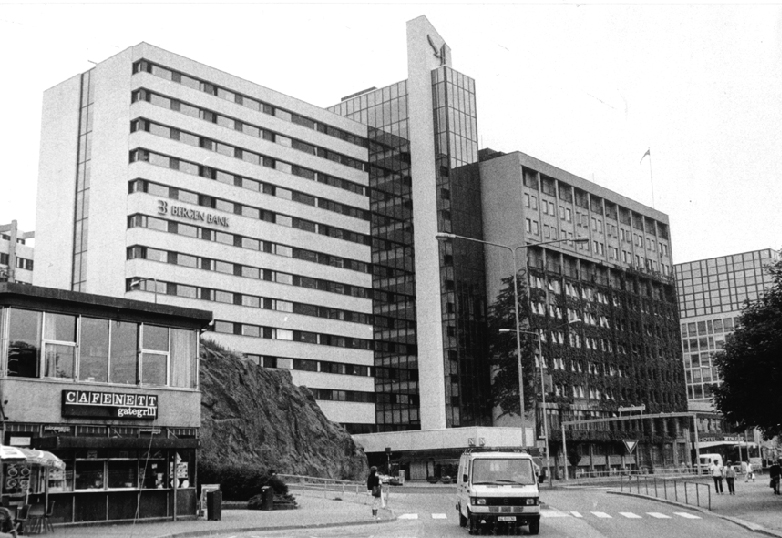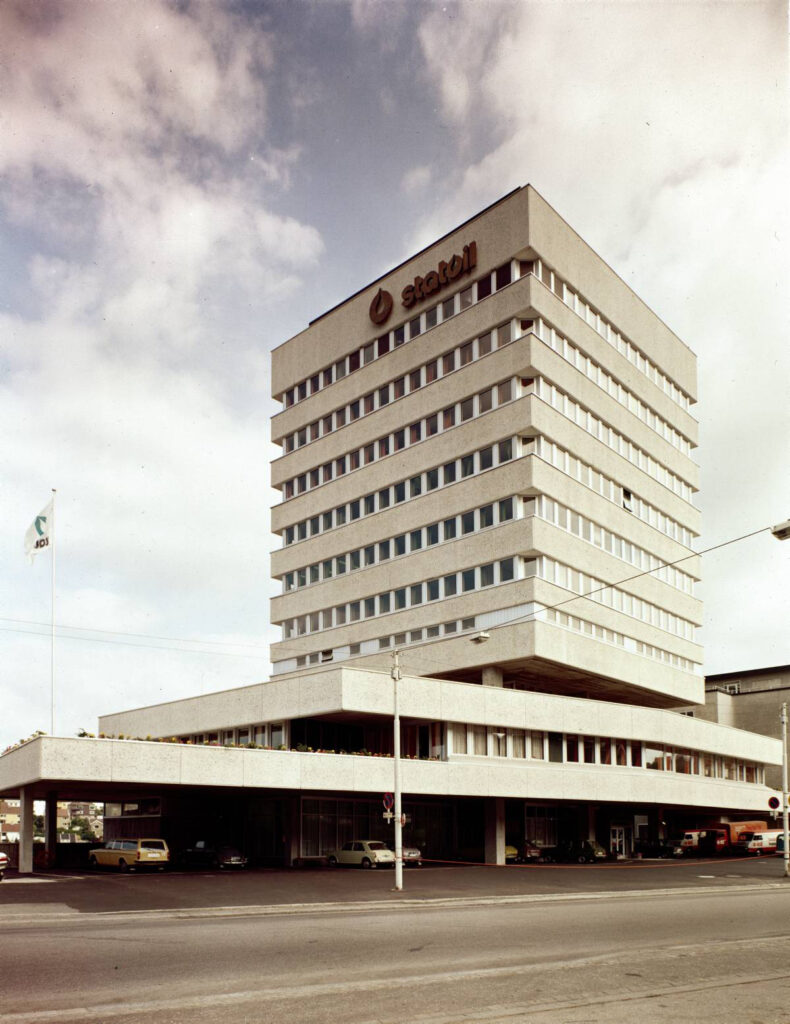Den norske stats oljeselskap is established

This event did not attract much attention in the Norwegian media. The heated atmosphere prevailing in the week before Norway’s referendum on European Community (EC) membership meant that this was the issue which dominated the news.
Minister as general meeting
The company’s general meeting consisted of the industry minister, which initially meant Finn Lied from the Labour Party (Ap). Since the EC vote on 25 September 1972 yielded a majority against membership, Ap prime minister Trygve Bratteli had to make good his promise and resign. His administration was replaced by a minority government headed by Lars Korvald from the Christian Democrats (Krf) on 18 October. Ola Skjåk Bræk from the Liberal Party (V) took over the Ministry of Industry.
But Lied served at the statutory general meeting, and his first job was to provide Statoil with a board of directors. As an Ap minister, he had a clear idea of the members he wanted. Lied’s close fried and ally, lawyer Jens Christian Hauge (Ap) was appointed chair, with Vidkun Hveding from the Conservative Party (H) as his deputy. Storting (parliament) representative Aksel Fossen (Ap) and businessman Per M Hansson (H) were appointed directors, while Åge Solbakken, a lecturer at the Norwegian Institute of Technology (NTH), became an alternate member. The first job of this board was advertise the senior management jobs and other positions.
Articles
Provisional articles of association for Statoil were also adopted by the directors, since it was presumed “that the board would continue work in the time to come on the company’s articles with a view to adapting these more closely to the assumptions underlying Proposition no 113 and Recommendation no 316 to the Storting”.
As specified in these provisional articles, the company’s object clause acquired supplementary wording which was to become a source of controversy. The clause had been formulated in the proposition (Bill) and Storting committee recommendation as follows: The corporate object of Den norske stats oljeselskap a.s is, either by itself or through participation in or together with other companies, to carry out exploration for and production, transport, processing and marketing of petroleum and petroleum-derived products. To that was now added: “as well as other business which bears a natural relation to this”. Proposed by Hauge at a meeting in the industry ministry on 13 September 1972, this change allowed the new state oil company to pursue activities which extended far beyond exploration for and production of oil and gas.
The addition was made on the quiet, without minutes being taken. Neither the board appointed at the same meeting, the Storting, nor probably the government were informed.[REMOVE]Fotnote: Norsk Oljehistorie, vol 1: 284-285. On 19 September, the day after the statutory general meeting, Hauge called the first board meeting for 5 October. The emphasis at that session was on appointing an able chief executive.
Early board meetings
The board held its initial meeting at Hauge’s office in Oslo’s Indekshuset building at Drammensveien 40. None of the applicants for the chief executive post were considered to be adequately qualified, and it was therefore resolved to look outside their ranks. Arve Johnsen, then state secretary (junior minister) at the industry department, had been noted by the directors as talented and an excellent management type. With the imminent change of government, he could be available to take on the assignment. Members of the senior management under the CEO would be sought through advertisements in the Norwegian press and foreign oil journals.[REMOVE]Fotnote: Statoil ASA, minutes of board meetings, 5 October 1972, National Archival Services of Norway (digitalarkivet.no).

Lied urged Johnsen to seek the job even though the deadline for applications had passed. After weighing the pros and cons, he ultimately decided to apply. Shortly afterwards, he was called to Hauge’s office – a combination of library, workplace, archive and art gallery. Johnsen had great respect for Hauge’s legendary opposition to the German occupation of Norway during the Second World War, and liked both the man and the atmosphere. Their discussion ranged over such subjects as the company’s opportunities, which activities had to be initiated and the appointment of key personnel. A second meeting was held a couple of days later with Hveding also present.[REMOVE]Fotnote: Johnsen, Arve, Utfordringen: Statoil-år, 1988: 20
The company’s next board meeting took place in Stavanger’s Hotel Atlantic. The day before, the directors had paid a courtesy call to county governor Gunnar Hellesen, mayor Arne Rettedal and chief financial officer Konrad B Knutsen – the trio who had become accustomed to easing the way for the oil industry in the city.
At the board meeting, Hauge and Hveding reported that they had formed a good impression of economist and lawyer Johnsen. The directors resolved unanimously to appoint him as chief executive.[REMOVE]Fotnote: Statoil ASA, minutes of board meetings, 25 October 1972, National Archival Services of Norway (digitalarkivet.no) He was immediately contacted by the board and invited to meet it in Stavanger. Prepared for this eventuality, Johnsen found a suitable flight on the same day, met the board and attended a subsequent press conference.
Low-key CEO

Johnsen travelled to Stavanger on 1 December 1972 and had his first working day at Statoil. The company had a flat at Lagårdsveien 80, which Johnsen initially used as his office.[REMOVE]Fotnote: Johnsen, Arve, Utfordringen: Statoil-år, 1988: 14. This apartment was unfurnished on his arrival, and he spent his first night in a sleeping bag on the floor.
The new CEO attended his first board meeting on 5 December 1972. His spartan approach was revealed anew in the refreshments he offered the directors, which included stew served on paper plates as well as crispbread and beer. The standard was raised for later board meetings.[REMOVE]Fotnote: Ibid.
An important job was the appointment of an executive management team. Johnsen had already reviewed 475 applications and established his priorities for which of the applicants were to be interviewed. He aimed to establish a project-oriented organisation and did not want people who were overly concerned with formal positions and titles. It was agreed to pursue a restrictive policy on pay. Employees would provide their homes and cars themselves. Six flats were made available for temporary accommodation.[REMOVE]Fotnote: Statoil ASA, minutes of board meetings, 5 December 1972, National Archival Services of Norway (digitalarkivet.no)
Less than a week after Johnsen took office, work had got seriously under way on building an organisation and getting to grips with the company’s activities.
arrow_backControl of Statfjord and the key blocksArve Johnsen – a visionary pioneerarrow_forward